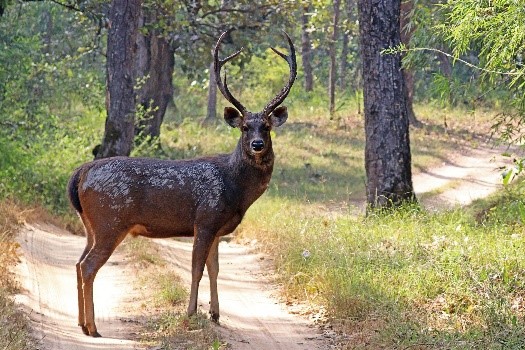





Disclaimer: Copyright infringement not intended
Context
About Sambar
|
PRACTICE QUESTION Q. Consider the following statements: 1. Sambar Deer is listed as an Endangered species on the IUCN Red List. 2. The sambar prefers the dense cover of deciduous shrubs and grasses. Which of the statements given above is/are correct? a) 1 only b) 2 only c) Both 1 and 2 d) Neither 1 nor 2 Answer: b) 2 only |







© 2025 iasgyan. All right reserved